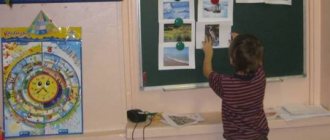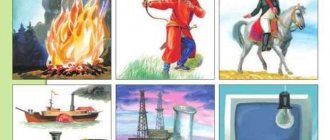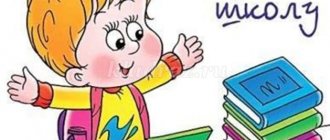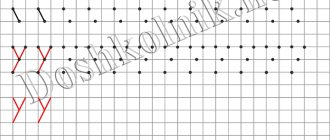Drawing a portrait of an artist
Of course, the basis for the success of an artist of any specialization is talent. Without it, it is impossible to create something that will evoke admiration not only from the author himself, but also from customers or ordinary observers. But talent is not a guarantee of success, it is the foundation for an artist, and only in combination with other personal qualities and skills is a professional future possible.
These include:
- Fantasy and rich imagination: an artist must be able to create something unique, original, and not just copy the works of other creators.
- Artistic taste, a sense of harmony: any creation is a combination of harmoniously selected colors and details, otherwise it would be difficult to call it a creation.
- Hard work: an artist's work is the result of his imagination and love for his work. To create something truly worthwhile, you need to make more than one attempt, spend a lot of time and be extremely focused.
- Observation: the artist easily notices even the smallest details both in the world around him, being inspired by them, and in his own works, he draws every little detail.
- Determination and perseverance: imagine if great artists threw their brushes aside every time they didn't succeed? We would never have seen their greatest creations, but the desire to finish what they started did its job. Anyone who sees a clear goal is able to achieve success in their work.
- Visual-figurative thinking, spatial imagination: they help to make unusual things out of ordinary things, to put details into a general concept.
- Color perception: the artist must be able to distinguish colors and correctly combine them with each other.
- The ability to accept criticism: creative activity, like any other, implies certain failures, because not everything always works out the first time. Plus, art is a matter of taste, and you shouldn’t hope that everyone will like your work. There will definitely be critics, and that's completely normal.
As a rule, a love of drawing and most of the listed qualities appear from an early age, but it is rare that childhood hobbies develop into a profession, although you can become an artist after graduating from a specialized educational institution.
Description
The profession of an artist is a creative work that requires good imagination, inspiration and mastery of drawing techniques. There are a lot of areas of artistic activity, so the profession has a number of narrower specializations:
- Illustrator. A specialist who creates pictures that describe text.
- Graphic artist. A master working in one contrasting color. Most often it is black. Pencil, ink, etc. are used for drawings.
- Cartoonist. This is a specialist who creates funny portraits or parodies of current events.
- Painter. The name of this industry is the most ancient and it is characterized by drawing from life.
- Fashion designer. This specialist specializes in creating sketches of new clothing collections. An artist who designs an outfit, a trendsetter.
- Copy artist. A specialist who creates copies of paintings and reproductions.
- Restoration artist. These specialists know exactly how to restore masterpieces to their original appearance.
- Specialist in the field of miniature painting.
- Portrait artist. This is working with people in order to fully convey their external characteristics. The transfer can be partial, it all depends on the style in which the master works.
There are many other equally popular areas of activity. The specifics of work in each of them have a number of differences. But one thing remains common - the art of conveying thoughts and fantasies through drawing.
What specialties to study?
In order to become an artist, it is not necessary to receive an education. The main thing is talent, but the absence of a diploma will not allow you to get a good job. Therefore, you should enroll in the following specialties:
- graphic arts;
- design;
- painting;
- artist of monumental and decorative art (painting);
- arts and crafts and folk crafts;
- theatrical and decorative arts;
- fine arts and drawing.
There are other highly specialized specialties.
Where to study
You can get an art education in universities, art schools, or at home from experienced masters of fine art. The following institutions are considered the most prestigious for obtaining such a specialty:
- St. Petersburg State University of Technology and Design.
- Moscow State University of Design and Technology.
- Tolyatti State University.
- Arctic State Institute of Arts and Culture.
What do you have to do at work and specializations?
Daily responsibilities are quite extensive and largely depend on the specialist’s specialization. However, there is also a range of processes common to all specialists:
- Search for customers. The artist himself does this. To do this, he participates in exhibitions and presentations. Also, the search for customers is often carried out via the Internet. Many artists work as freelancers.
- Meeting customers and finding out their needs. Often clients order paintings as gifts, illustrations, portraits, caricatures. The artist must understand as clearly as possible what the clients want. In addition, it is important to demonstrate your work so that customers understand the style in which the author writes. After all, most of the names are not clear to ordinary people. It is precisely because of such mistakes that conflict situations arise.
- Thinking over the concept of a future work. The artist thinks through what he would like to depict and in what context.
- Purchase of necessary materials.
- Creating a sketch. This is a general outline of the future picture, with a visualization of the future location of key objects. It can be compared to a utility diagram.
- The actual drawing process itself. This is the longest stage. It is usually tied to deadlines. The creative process can take place over several months and even years.
- Framing the picture and preparing for delivery.
- Delivery of completed work and settlement with the buyer.
This is far from a complete range of artist responsibilities. It can only expand and increase depending on the specialization of the master.
Who is this profession suitable for?
This profession is suitable for creative people with a well-developed imagination. A true artist knows how to draw inspiration from everything that surrounds him and interpret his emotions into works of fine art.
In addition, self-organization is an important quality for any artist. After all, the working day is mainly structured depending on orders and inspiration. A master must be able to force himself to work even through “I don’t want to.”
Communication skills are very important. After all, an order depends 50% on whether the creator of works of art can please future customers.
Summarize
An artist is not only about the paintings hanging on the walls of our grandparents or placed in the walls of museums, it is about the scope of thoughts, creativity, flight of ideas, endless inspiration and implementation. Artists combine different professions: they are the creators of beautiful pictures in theater and cinema, and those who draw favorite characters in computer games, and craftsmen who bring unique things back to life.
Like any other profession, it requires a serious approach, constant training, development of professional skills, patience and diligence. There is also competition in the creative environment, you shouldn’t forget about it, because there are fewer offers on the labor market than there are specialists, so you won’t be able to relax (of course, if we are talking about generating income, and not just about working for pleasure).
If you have a talent for drawing and you see yourself in this profession, feel free to take the first step: read useful literature, sign up for courses and don’t be afraid of anything. Any professional path is full of challenges and obstacles, and only by going through them do we become true masters of our craft.
Love what you do and everything will work out! Good luck!
We also recommend reading:
- Storytelling
- Exercises that will awaken your creativity
- Sketching for beginners
- Profession “Designer”: from a simple pencil to high computer technologies
- 10 most famous artists
- Profession programmer: coder or creator?
- A selection of useful materials about creativity and creativity development
- 15 tasks that will boost your intelligence
- Roles You Should Try on to Be Creative
- How to find your calling and change your life for the better
- “Steal like an artist” - ten tips for any kind of creativity
Keywords:1LLL





